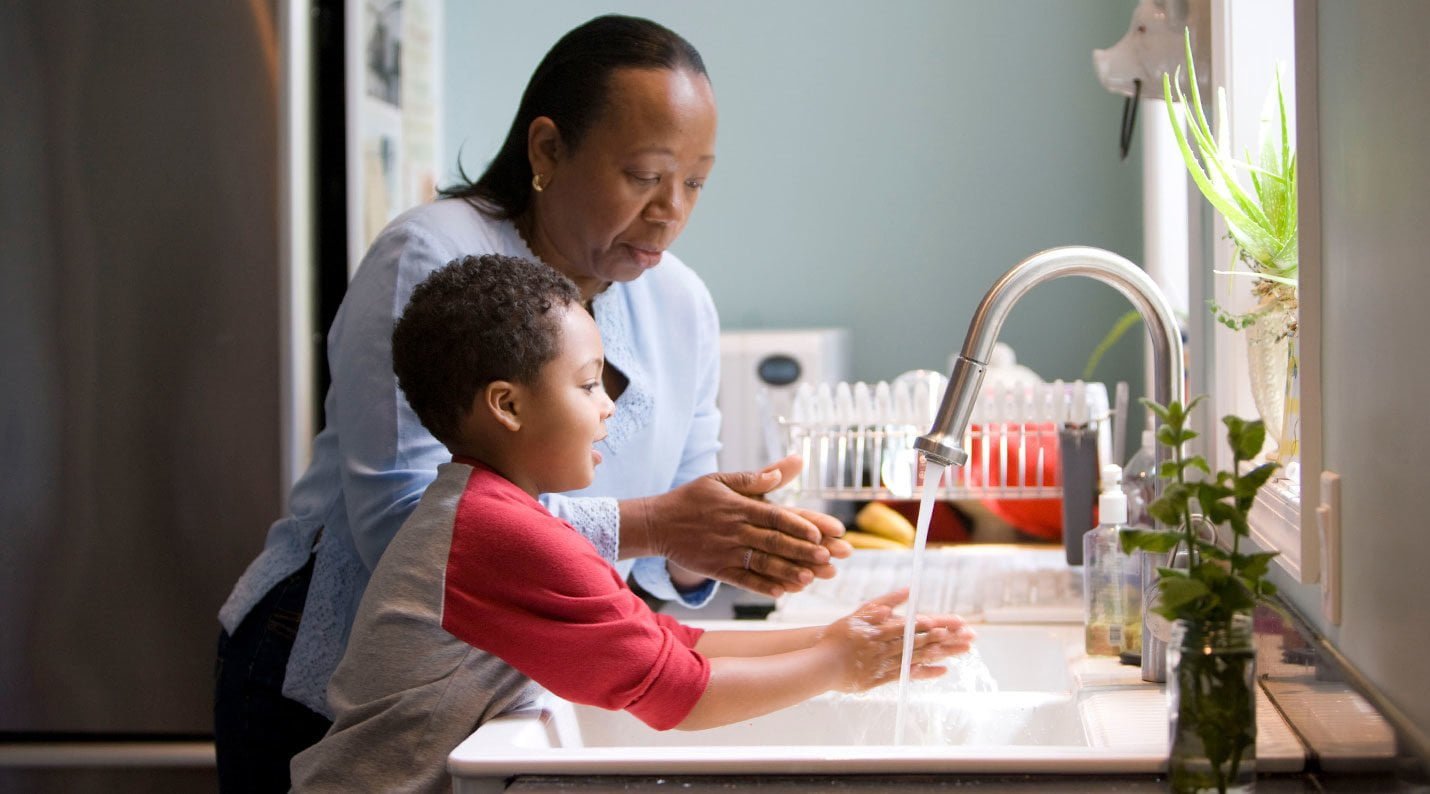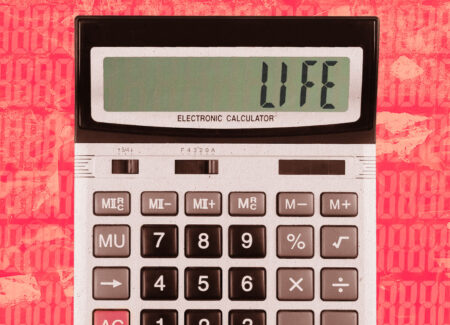The impact of the coronavirus defies any one narrative. Its influence becomes exponentially more complex each day as it tests our capacity to hold multiple truths at once. It is both catastrophic and potentially regenerative, isolating and uniting. It is a time of sirens, birdsong, and eerie quiet.
This pandemic is “a portal, a gateway between one world and the next,” writes the novelist Arundhati Roy in the Financial Times. “We can choose to walk through it, dragging the carcasses of our prejudice and hatred, our avarice, our data banks and dead ideas, our dead rivers and smoky skies behind us. Or we can walk through lightly, with little luggage, ready to imagine another world. And ready to fight for it.”
A new report predicts the final demise of some of these ideas and realities, which, for many of us, have long been carcasses: that women should be the primary caregivers at home; that the unpaid care work that many women do is less valuable than paid work; that paid family leave or paid sick time isn’t essential for all workers.
But the death of these ideas won’t be painless. The authors of the new report, academic economists from the United States and Germany, suggest that the coronavirus pandemic and resulting economic fallout will impact women disproportionately (and devastatingly) in the short term. This is partly because, unlike other recessions, women hold the majority of jobs that are either deemed “essential” or that are being cut—in health care, retail, leisure, and hospitality. And, as most families lose their access to any childcare support, women have taken on the responsibilities of homeschooling and caring for kids.
This moment could be a portal into a world where caregiving responsibilities are divided more equally between partners, where we value care work for what it actually is—the backbone of our entire economy.
But the authors also predict something else: that this moment could be a portal into a world where caregiving responsibilities are divided more equally between partners, where we value care work for what it actually is—the backbone of our entire economy, where businesses recognize that the inflexibility and productivity demands of the modern workplace are unsustainable and inhumane.
The data they present weaves together multiple possibilities and realities. And it serves as a reminder that it’s misguided—and impossible—to talk about women as one monolithic group: For single mothers, for women doctors and nurses, for women of color, for women working in the gig economy or on the retail frontlines, for full-time home caregivers, this pandemic has already, and will continue, to have divergent impacts. How, then, do we make sense of these many stories, and what do they mean for policymakers working to ease the devastation or accelerate progress?
I got in touch with one of the report’s authors, University of California, San Diego assistant economics professor Titan Alon, to talk more about how the gender equality impacts of this moment might resemble those of WWII, and where we might draw policy inspiration. One important note: the conclusions and predictions the authors share are based on heterosexual couples; Alon told me they don’t have the data to answer questions about same-sex couples yet, though that will likely change in the future as the census begins to collect this data more regularly. The Q&A, which took place over email, has been edited for clarity and length.
Elizabeth Weingarten: Gender equality issues are often secondary, an afterthought, in moments like this, when there is a clear and present danger or a heightened sense of urgency. Why did you feel it was important to write this paper now, even while there’s so much uncertainty?
Titan Alon: Unlike a regular recession, which usually comes on gradually, this crisis has had a huge immediate impact. The unemployment claims we’ve seen in the last two weeks are completely unprecedented. The impacts on women and families were just as immediate and just as severe. If we want to have any chance to formulate a helpful policy response in real time, we need evidence right now, and so that is what we are trying to provide in this paper.
You suggest that the economic downturn resulting from COVID-19 may affect women differently than other similar downturns in history. What are the most significant short-term impacts? And who will be hit the hardest?
We think the most significant impact on women during the crisis will be trying to balance childcare needs and work demands. With daycares and schools closed, suddenly families with children need to meet all these extra childcare needs—almost like working a second job! The data show that these demands disproportionately fall on women, making it even harder to work in what is already a very challenging time. The group most likely to be hardest hit then would be lower income families with young children, and single mothers in particular. This is sadly all too often the case.
We think the most significant impact on women during the crisis will be trying to balance childcare needs and work demands.
I’m struck in particular by this line from your paper, based on the statistic that 73.5 million children under 18 live in the United States, and of them, 21 percent live only with their mothers: “If all schools in the US are closed for a prolonged period, so that single mothers cannot work, then 21 percent of all children are at risk of living in poverty.” What is the takeaway of this, particularly for policymakers?
There is an abundance of research showing that the hardships of growing up in poverty can persist much later into life. Sadly, the statistics show that this crisis, if not properly managed, may push a large population of vulnerable families into this situation. This is especially relevant for policymakers since there are a number of straightforward, and commonsense policies that could greatly reduce these risks which have already been implemented in other countries quite successfully. We talk about some examples in our paper, such as (1) providing income replacement for parents forced to stay home to look after young children during school closures, or (2) removing work requirements (or seeking work requirements) from Temporary Assistance for Needy Families Program, Medicaid, and unemployment programs.
The Families First Coronavirus Response Act will require employers to give workers at organizations with fewer than 500 employees 12 weeks of paid leave, and pay them two-thirds of their wages. If you were designing an income replacement program, would you design it differently? Are there other models that we should be looking to?
Yes. We would argue that paid leave policies should apply more broadly, both to workers at larger firms and to gig workers. The two thirds cap should be more generous for low income workers. Denmark for example has a graduated system that provides income support of 90 percent for lower income workers and 75 percent for higher income workers. Germany’s Kurzarbeit program is another good example of a successful income replacement scheme, and they have been able to scale up their program quickly because it was already around. During the Great Recession it helped Germany recover from the crisis more quickly than many other countries. The main goal should be to preserve employer-employee links. We know that job loss, especially during a recession, can leave an “economic scar” on workers’ employment and earnings prospects for many years, so we should avoid that for as many workers as possible.
As childcare centers have shuttered, many parents are balancing childcare and work demands for the first time, and acknowledging how hard (and valuable) care work is. Do you think this shift will last?
We are thinking about two big changes that come out of this crisis. The first is that employers are going to become increasingly aware of how important accommodating the family and childcare needs of their employees is. During the crisis, firms are investing a lot in technologies that help their employees adopt flexible work arrangements and work from home. We believe much of this will remain after the crisis, and will benefit all families, but women with children will benefit especially in the short run as they currently bear most care responsibilities in the family.
In some sense, more flexible work arrangements for employees with families will itself be a norm shift in the way companies operate. However, the larger one is the way care work is split between husbands and wives. There has been a long and slow trend toward men taking on more of these responsibilities in recent decades, but we believe the crisis will greatly accelerate it—as, for instance, WWII changed norms about women in the labor force.
The crisis will make many more aware of the importance of care work and the need to share those demands more equitably. That is, in some sense, the silver lining for women in the long run.
There will be many families where the current situation will necessitate husbands taking more responsibility for care work than in the past (anecdotally, think about families whose children are at home but with a mother who works as say a doctor or nurse but with a husband who is telecommuting or has been furloughed). The crisis will make many more aware of the importance of care work and the need to share those demands more equitably. That is, in some sense, the silver lining for women in the long run.
It seems like there are key differences in the shift that took place during WWII and the one you’re predicting now. During WWII, women were switching from unpaid to paid work, from work inside the home with less societal prestige to work with more. Today’s (potential) shift would be kind of the opposite. Could those variables impact how sustainable this shift really is?
The key similarity is that crisis necessitates change, which then leads to new norms that persist even after the crisis passes. The question of prestige is an interesting one. In some sense, it’s hard for me to separate it from the social norm itself. Part of the social transformation will be the dispelling of these kinds of negative associations between childcare and prestige. In the end, in our view, raising children is one of the most important social and economic activities a society can engage in.
The real idea here is that economic forces can play an important role in shaping the way families are organized, raise their children, and the social norms surrounding them.
The real idea here is that economic forces can play an important role in shaping the way families are organized, raise their children, and the social norms surrounding them. As women continue to close the gap in education (as they have already in younger generations) and earnings (in some strata, they already outearn their husbands) it will be in the best interest of families to more equitably share home care and house care demands. In that sense, once change occurs, the economic forces are there to reinforce these changes and sustain them. This is another analogy to World War II—families began to realize the economic benefits of having two earners in the household, and so once new norms had emerged, economic forces served to sustain them.






